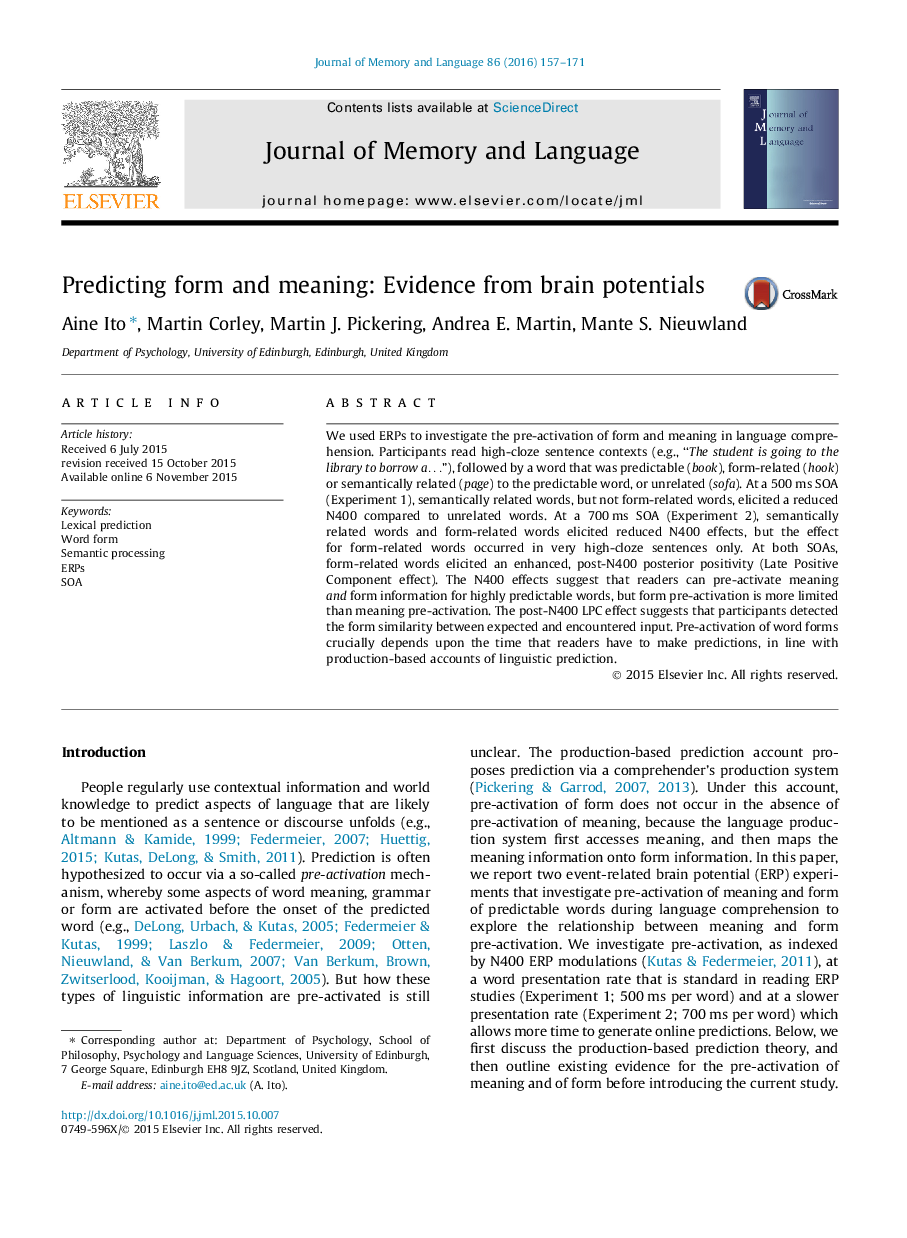| Article ID | Journal | Published Year | Pages | File Type |
|---|---|---|---|---|
| 931782 | Journal of Memory and Language | 2016 | 15 Pages |
•An ERP study on pre-activation of form and meaning during lexical prediction.•Cloze-dependent reduced N400s for anomalous words with semantic/form relatedness to target.•N400 reduction for form related words depended on SOA.•Evidence that form pre-activation is more limited than meaning pre-activation.•The pre-activation pattern is consistent with prediction-by-production theory.
We used ERPs to investigate the pre-activation of form and meaning in language comprehension. Participants read high-cloze sentence contexts (e.g., “The student is going to the library to borrow a…”), followed by a word that was predictable (book), form-related (hook) or semantically related (page) to the predictable word, or unrelated (sofa). At a 500 ms SOA (Experiment 1), semantically related words, but not form-related words, elicited a reduced N400 compared to unrelated words. At a 700 ms SOA (Experiment 2), semantically related words and form-related words elicited reduced N400 effects, but the effect for form-related words occurred in very high-cloze sentences only. At both SOAs, form-related words elicited an enhanced, post-N400 posterior positivity (Late Positive Component effect). The N400 effects suggest that readers can pre-activate meaning and form information for highly predictable words, but form pre-activation is more limited than meaning pre-activation. The post-N400 LPC effect suggests that participants detected the form similarity between expected and encountered input. Pre-activation of word forms crucially depends upon the time that readers have to make predictions, in line with production-based accounts of linguistic prediction.
